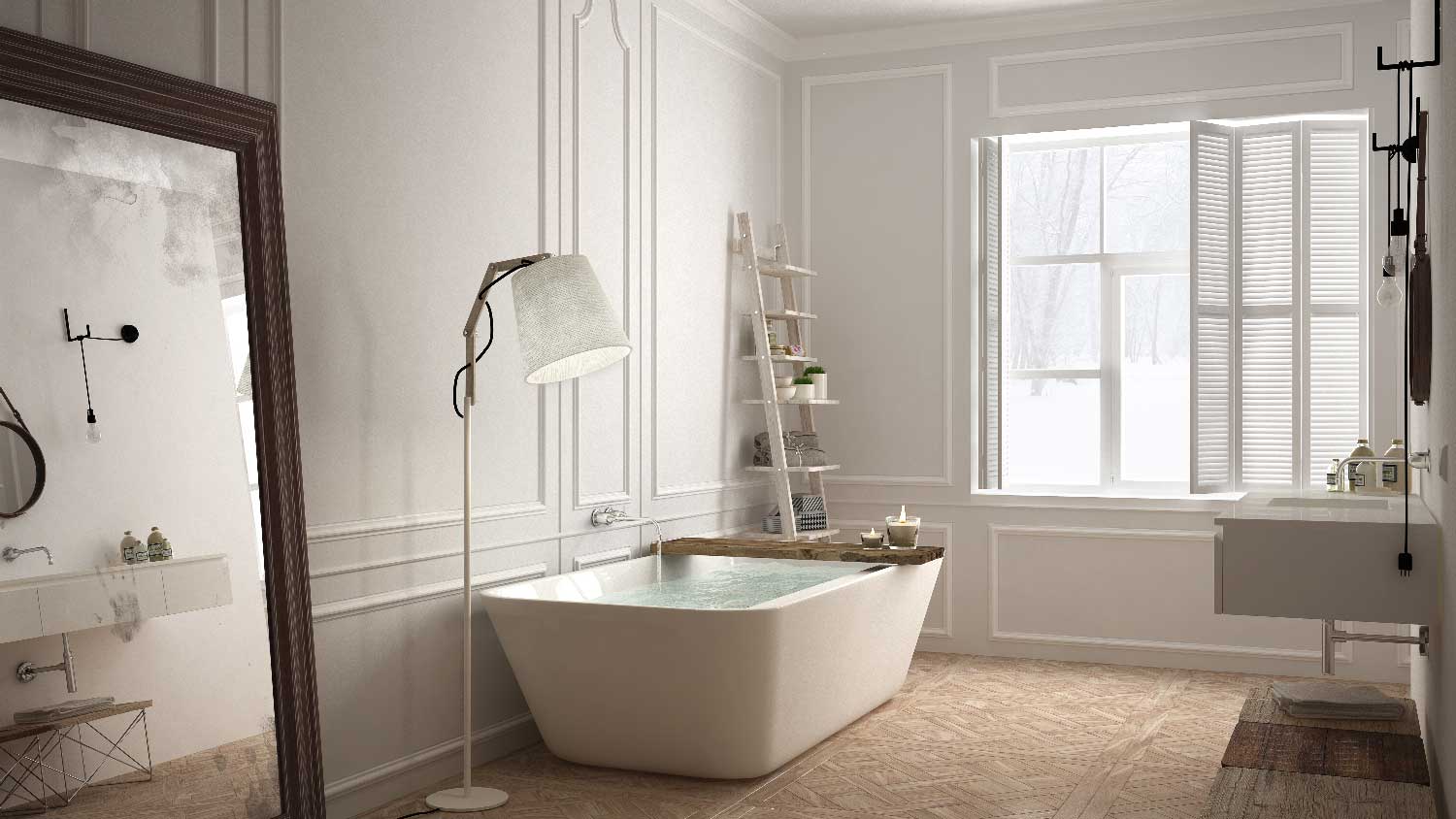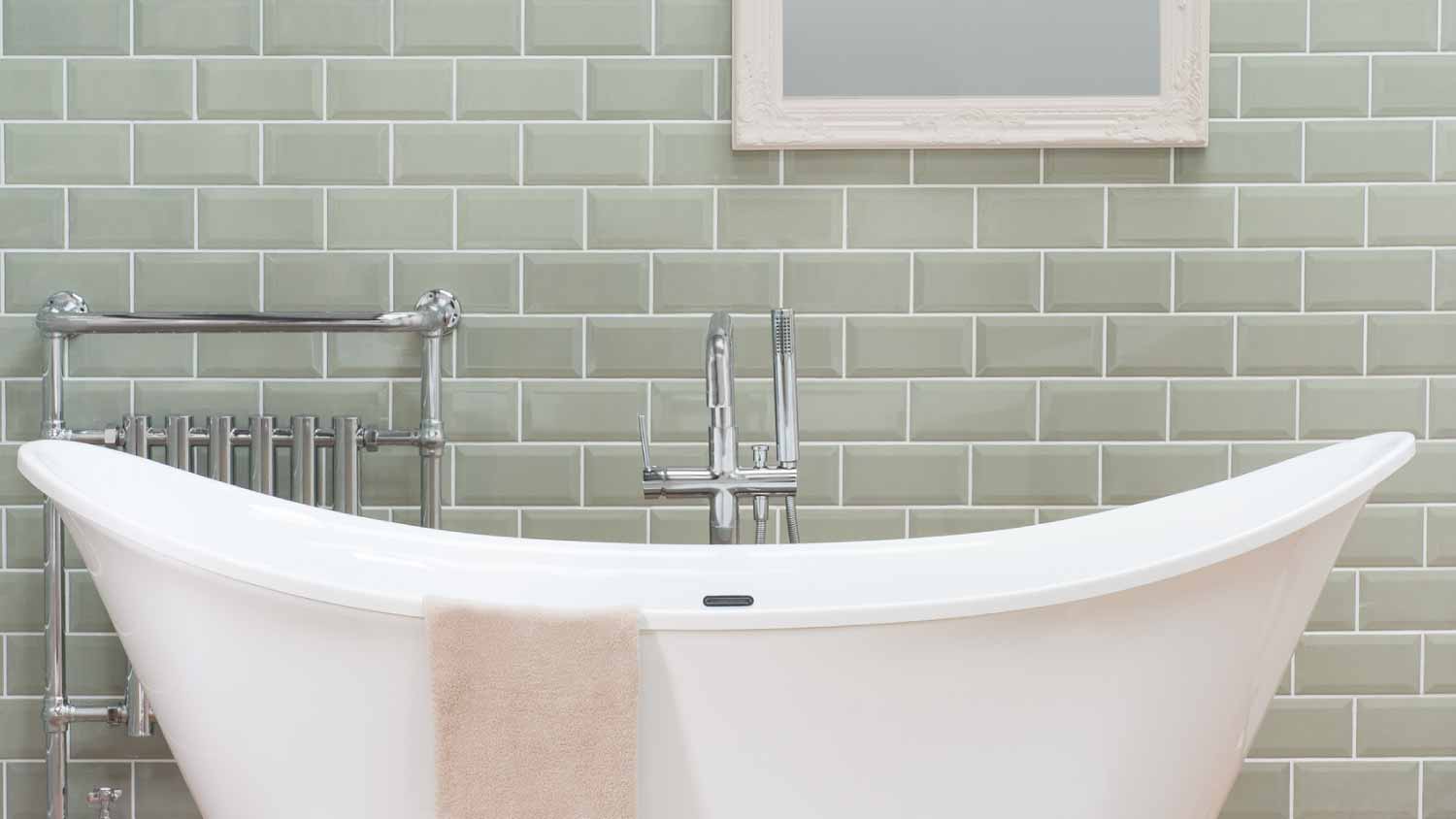
Bathroom cabinet costs can easily skyrocket. Take a look at these important cost factors and considerations to help you stay within your budget.
Rest easy in the right size bedroom


The average U.S. bedroom is about 132 square feet, although primary bedrooms can average much larger.
Bedrooms should be a minimum of 120 square feet to accommodate a full-size bed; children’s bedrooms are often smaller.
Your home’s age, floor plan, and local building codes can affect bedroom sizes.
Bedrooms serve as a place of rest and relaxation, and you want to be sure your bedroom is large enough to be comfortable and accommodate everything it needs to. Whether you’re buying or building a new home or remodeling your current one, knowing the average bedroom size can help you plan your project and ensure your bedroom meets your needs. We break down average bedroom sizes and dimensions, and what factors affect bedroom size.
The average U.S. bedroom size is around 132 square feet, with primary bedrooms often being larger, with an average of about 224 square feet, and secondary bedrooms smaller at an average of 120 square feet. Common dimensions for bedrooms range from 10-by-10 feet to 14-by-16 feet.
While many older homes have bedrooms that are all similarly sized, modern homes normally have a primary bedroom that’s larger than other bedrooms that are used as kids’ bedrooms, guest bedrooms, or home offices.
| Bedroom Type | Average Square Footage |
|---|---|
| Primary bedroom | 200–400 |
| Kids’ bedroom | 100–150 |
| Guest bedroom | 120–200 |
Primary bedrooms are larger than other bedrooms, averaging between 200 and 400 square feet. Primary bedrooms may also include walk-in closets, en suite bathrooms, or other features to set them apart from other bedrooms in the house. King-size beds are just over 42 square feet, so a larger primary bedroom allows plenty of room for a bigger bed as well as space to move around it.
Children’s bedrooms and nurseries are typically much smaller than primary bedrooms, averaging between 100 and 150 square feet, or 10-by-10 feet to 10-by-15 feet. A twin bed is less than 20 square feet and can more easily fit in a smaller room than other common bed sizes.
The average guest bedroom measures 10-by-12 to 10-by-15 feet, or 120 to 150 square feet. Guest bedrooms are often a minimum of 120 square feet to comfortably accommodate a full-size bed. Since these bedrooms may be multipurpose, accommodating a home office or other secondary usage, a little extra space can go a long way.

When trying to determine the ideal bedroom size, take factors into account like bed size, intended room use, storage space, and more. High ceilings can help a smaller bedroom feel bigger, and built-in storage solutions can maximize storage space without taking up valuable square footage.
Other factors can affect bedroom size, like your home’s age, the layout and floor plan, and local building codes. Here’s how these things can influence bedroom size.
Older homes built prior to the 1970s and ‘80s tend to have smaller, more uniformly sized bedrooms, and larger primary bedrooms are less common in older homes. New builds commonly include a large primary bedroom or suite and smaller secondary bedrooms, but if you’re buying an older home, expect smaller bedrooms overall.
Your home’s layout can also influence bedroom size. Traditional home styles like raised ranches, Craftsman homes, Victorians, and Colonials often feature smaller bedrooms with a slightly larger primary bedroom, if any. Adding a larger bedroom in some floor plans may involve extensive remodeling, adding a room above your garage, a bedroom addition, or knocking down walls between existing rooms.
Some areas may have strict requirements about what is allowed to be called a bedroom. In most cases, there needs to be a point of egress like a window or exterior door for a room to be listed as a bedroom, but your municipality may also have codes that dictate minimum bedroom size as well.
If your bedroom isn’t big enough for your needs, consult a local home remodeling pro to create the room of your dreams. A bedroom remodel costs an average of $3,500 to $40,000, depending on the extent of the work and what’s on your bedroom remodel checklist. Adding space to existing bedrooms can help increase your home’s value and make it a more comfortable, restful environment for you and your family.
Very professional, polite and helpful. I would recommend him!
Raven and crew does absolutely fantastic job. They are very professional if any concerns were to occur with any of her work she always took responsibility and finished out with a great job. I have worked with her business for a year and have always been satisfied. Very trusted business and...
I had Ace Fireplace Services install custom chimney caps for my home, and the results are stunning. They fit like a glove and have added a touch of sophistication to my chimney. I can't recommend their services enough.
Custom Paint Jobs LLC turned our outdated bathroom into a modern masterpiece.
Very professional and efficient with work. Answered each question I had with great knowledge and an informative response. Will be working with them again.
Window Depot did an amazing job on my deck. I wasnt sure what I wanted to do, but their composite decking was affordable and will last a long time. I am excited to have family over, and I am no longer embarrassed by my backyard. Jeff and the ground crew were polite, respectful, and caring for...
Great tree company, very professional and honest. Glad we found them, they had the best pricing
Maple Tree Service should serve as a mentor for other business! Customer service was superior and beyond expectation. Response to request was prompt. The representative was very courteous and proud of the company. Quote was given during initial visit and work date established. A follow up...
Eugene returned my call within minutes and was able to complete the job within a couple of days. Friendly and professional, and I feel his prices are reasonable.
We used Unique Hardwood Floor LLC three years ago to work on the floors of a 70 year old home that needed a great deal of work. Some floors needed repairs, some were replaced and others just needed to be refinished. It was a complicated job as they needed to blend the old and the new to...
From average costs to expert advice, get all the answers you need to get your job done.

Bathroom cabinet costs can easily skyrocket. Take a look at these important cost factors and considerations to help you stay within your budget.

Building a laundry room addition to your home adds value and functionality. Your laundry room addition cost will depend on size, materials, and other factors.

Remodeling your bathroom can add significant value to your home. Your bathroom remodel cost in Columbus, OH will depend on size, fixtures, materials, labor, and other factors.

An updated bathtub can give a bathroom a whole new look. Find out how much it costs to replace a bathtub in Minneapolis, MN, including prices by type and labor costs.

Understanding the types of kitchen remodel work that require a permit and how to apply for one will help you avoid any complications or fines further down the line. Read this guide to understand all the important steps.

An updated bathtub can give a bathroom a whole new look. Find out how much it costs to replace a bathtub in Phoenix, AZ, including prices by type and labor costs.